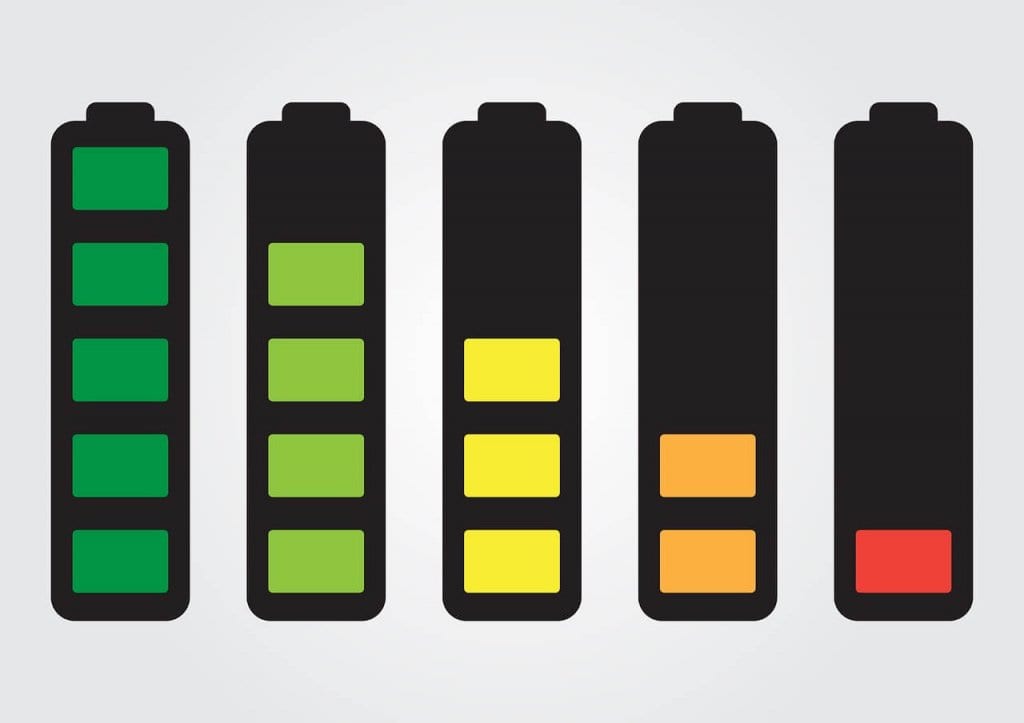Solar can finally operate in all 4 quadrants of the PQ curve.
By: Adam Baker
Battery storage being all the rage these days, I have a few thoughts on how it can be used that extends beyond the basics of:
- Ramp rate management (stored energy to prevent duck curve)
- Time shifting energy (stored morning energy delivered later in the day when PPA price is higher)
Here are a few things battery storage can do that go well beyond, and are potentially more economically valuable.

What solar can provide without battery storage
When the sun shines in traditional solar, we turn solar energy into dollars. The problem? Clouds. The site ramps down at whatever rate clouds arrive, and ramps back up at the rate clouds leave. In some small systems (islands like Hawaii and Guam particularly), this fast ramp rate is highly undesirable, as thermal generation can’t ramp as fast to compensate for solar variability.
The promise of battery storage to smooth out fast variability is critical to high penetration solar regions (CAISO). In fact, battery storage is a requirement in many future interconnection agreements.
The final challenge in this battery storage scenario is what manages the batteries and inverters to ensure smooth ramping. Only one system can be in charge.
What solar can provide with battery storage integrated into the solar controls system
The next lowest hanging fruit on the generation revenue tree is frequency response. Until now, solar sites have never been able to react to grid underfrequency conditions, where traditional generation would ramp up beyond nominal to fulfill increasing load. Solar has, however, been responding to overfrequency as a condition of interconnection agreements to shed solar generation (viewed by utilities as negative load) when load drops and generation doesn’t ramp down fast enough. With the addition of battery storage alongside solar, capabilities can come full circle by:
- Absorbing any amount of kW up to the battery storage limit.
- Delivering kW when the grid needs it (even beyond the capacity of the site’s inverters).
Higher up on the revenue tree, there are opportunities for grid support more financially beneficial but infrequent, such as absorbing or delivering VARs 24/7.
Historically, an inverter’s ability to deliver VARs required kW to be delivered simultaneously. More recent developments enable inverters to deliver high VARs even with low kW output, and even deliver VARs at night from consumed kW.
The three graphs below show the evolution of kVAR relationship from inverters over time.



The downside to this capability is that inverters require grid voltage to be in the inverter’s operable range to make night VARs. With the integration of battery storage, night VARs can be generated from batteries and/or inverters simultaneously and the inverter consumption of kW from the grid can be avoided using battery power.
Want battery storage and solar to work together? You need one system in charge of both.
In order for these new solar capabilities to succeed, one single control system must be in charge of both battery storage and solar generation.
Easier said than done.
Today’s manufactured battery storage systems are designed to operate as standalone systems within a single shipping container. They weren’t designed to be integrated with solar, which is why you need a system integrator proficient in solar controls who understands the intricacies of how batteries and solar can be commanded to work together.
Charging your batteries and delivering energy at the same time is a delicate balance. You wouldn’t want your battery controls to ever conflict with your interconnection agreement’s active power limit. In a nutshell, the more ancillary services you provide for grid support, the more complex the integration process.
Where to put battery storage?
In my opinion, the obvious place to put battery storage is on the DC side of the inverter. Unfortunately, that is not how it’s being deployed. Right now, it’s deployed as a shipping container full of batteries in the switchyard.
One of the downsides of this strategy is that all the clipped energy out of the inverter is lost. If you put battery storage on the inverter, you could collect that clipped energy. At least, any curtailed energy can be captured by battery storage if the site’s capacity is less than the cumulative inverter capacity.
Not to mention distributing batteries around a site (rather than keeping them all in one place) is much safer because you don’t have a large amount of stored energy in one location.
Conclusion
When it comes to integrating battery storage, the complexities are widespread and nuanced. Managing two systems designed to run independently in a coordinated fashion is only for integrators with a very deep understanding of how control can be applied in PV solar. The integration of these technologies is forced into markets (like CAISO) to solve a specific problem. But the system can be leveraged to generate revenue in ways that aren’t currently being considered by most users.
Talk to me about how to get the most bang for your energy storage buck!
Adam Baker
Adam Baker is Senior Sales Executive at Affinity Energy with responsibility for providing subject matter expertise in utility-scale solar plant controls, instrumentation, and data acquisition. With 23 years of experience in automation and control, Adam’s previous companies include Rockwell Automation (Allen-Bradley), First Solar, DEPCOM Power, and GE Fanuc Automation.
Adam was instrumental in the development and deployment of three of the largest PV solar power plants in the United States, including 550 MW Topaz Solar in California, 290 MW Agua Caliente Solar in Arizona, and 550 MW Desert Sunlight in the Mojave Desert.
After a 6-year stint in controls design and architecture for the PV solar market, Adam joined Affinity Energy in 2016 and returned to sales leadership, where he has spent most of his career. Adam has a B.S. in Electrical Engineering from the University of Massachusetts, and has been active in environmental and good food movements for several years.

